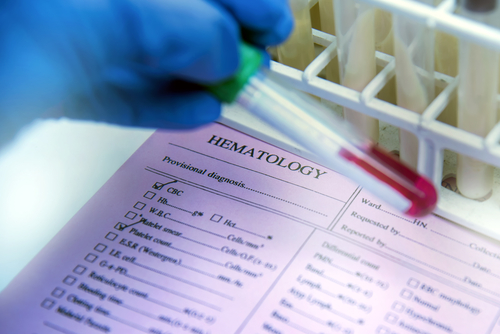Activated Platelets Key in Development of ANCA-Associated Vasculitis, Study Reports

Platelets were found to take part in activating the alternative complement pathway, a known and important step in the progression of antineutrophil cytoplasmic antibody (ANCA)-associated vasculitis.
According to the study “Platelets are activated in ANCA-associated vasculitis via thrombin-PARs pathway and can activate the alternative complement pathway” published in the journal Arthritis Research & Therapy, platelets were found to be hyperactivated in patients with active ANCA in part due to the workings of a protein called thrombin.
Several studies have shown that activation of the alternative complement pathway is important in ramping up the immune system in ANCA-associated vasculitis. A hyperactive pathway has been reported in ANCA patient, but little is known about the mechanisms leading to this pro-inflammatory process.
Analysis of blood samples from ANCA patients show that they have higher levels of platelets, which makes them more susceptible to vessel blocked by blood clots. This hypercoagulant state may also contribute to the pro-inflammatory mechanisms involved in this disease, in part due to the release of the protein thrombin.
Thrombin is required in the clotting process and an activator of platelets, but it can also release inflammatory signals.
To better understand the relation between ANCA development and platelets, researchers at Peking University investigated the processes underlying platelet activation in people with ANCA-associated vasculitis.
The study included 31 people with active ANCA-vasculitis, of whom 27 were positive for myeloperoxidase (MPO) and four were positive forproteinase 3 (PR3) autoantibodies, and 40 healthy volunteers. Blood samples were collected from all participants and analyzed.
Work confirmed that those with active ANCA had significantly higher levels of activated platelets and platelet-leukocyte clots than people whose ANCA was in remission or who were disease-free. This active platelet state was found to be associated with increased levels of C3 and C5 components of the alternative complement pathway.
Exposing steady-state platelets to blood plasma collected from patients with active ANCA triggered an activated state in them. This suggested that an element present in the plasma was the responsible for platelet activation.
Based on previous data, the team hypothesized that this element could be thrombin. To test this, they blocked thrombin with chemical inhibitors and repeated the experiment. This time, the platelets were not activated.
“Our study reveals that platelets are activated in AAV [ANCA-associated vasculitis] patients,” the researchers wrote. This was found to be in part due to the activity of thrombin, which the researchers believe may account for the hyper-coagulated state in active ANCA-vasculitis.
“These findings support the possible roles of platelets in the pathogenesis of AAV and indicate their potential as novel therapeutic targets,” they concluded.






